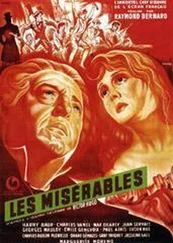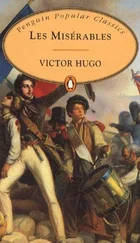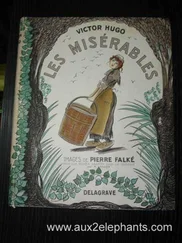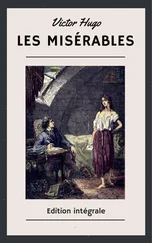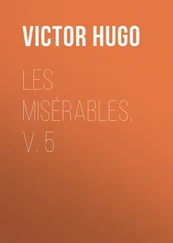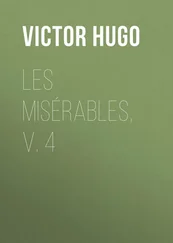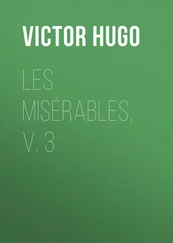Lascelles Wraxall - Les Misérables, v. 1
Здесь есть возможность читать онлайн «Lascelles Wraxall - Les Misérables, v. 1» — ознакомительный отрывок электронной книги совершенно бесплатно, а после прочтения отрывка купить полную версию. В некоторых случаях можно слушать аудио, скачать через торрент в формате fb2 и присутствует краткое содержание. Жанр: literature_19, foreign_antique, foreign_prose, на английском языке. Описание произведения, (предисловие) а так же отзывы посетителей доступны на портале библиотеки ЛибКат.
- Название:Les Misérables, v. 1
- Автор:
- Жанр:
- Год:неизвестен
- ISBN:нет данных
- Рейтинг книги:4 / 5. Голосов: 1
-
Избранное:Добавить в избранное
- Отзывы:
-
Ваша оценка:
- 80
- 1
- 2
- 3
- 4
- 5
Les Misérables, v. 1: краткое содержание, описание и аннотация
Предлагаем к чтению аннотацию, описание, краткое содержание или предисловие (зависит от того, что написал сам автор книги «Les Misérables, v. 1»). Если вы не нашли необходимую информацию о книге — напишите в комментариях, мы постараемся отыскать её.
Les Misérables, v. 1 — читать онлайн ознакомительный отрывок
Ниже представлен текст книги, разбитый по страницам. Система сохранения места последней прочитанной страницы, позволяет с удобством читать онлайн бесплатно книгу «Les Misérables, v. 1», без необходимости каждый раз заново искать на чём Вы остановились. Поставьте закладку, и сможете в любой момент перейти на страницу, на которой закончили чтение.
Интервал:
Закладка:
There were in his oratory two straw priedieus, and an arm-chair, also of straw, in his bed-room. When he by chance received seven or eight persons at the same time, the Prefect, the General, the staff of the regiment quartered in the town, or some pupils of the Lower Seminary, it was necessary to fetch the chairs from the winter drawing-room, the priedieus from the oratory, and the easy chair from the bed-room: in this way as many as eleven seats could be collected for the visitors. At each new visit a room was unfurnished. It happened at times that there would be twelve; in such a case the Bishop concealed the embarrassing nature of the situation by standing before the chimney if it were winter, or walking up and down the room were it summer.
There was also another chair in the alcove, but it was half robbed of the straw, and had only three legs to stand on, so that it could only be used when resting against a wall. Mlle. Baptistine also had in her bed-room a very large settee of wood, which had once been gilt and covered with flowered chintz, but it had been necessary to raise this settee to the first floor through the window, owing to the narrowness of the stairs: and hence it could not be reckoned on in any emergency. It had been Mlle. Baptistine's ambition to buy drawing-room furniture of mahogany and covered with yellow Utrecht velvet, but this would have cost at least 500 francs, and seeing that she had only succeeded in saving for this object 42 francs 5 sous in five years, she gave up the idea. Besides, who is there that ever attains his ideal?
Nothing more simple can be imagined than the Bishop's bed-room. A long window opening on the garden; opposite the bed, an iron hospital bed with a canopy of green serge; in the shadow of the bed, behind a curtain, toilet articles, still revealing the old elegant habits of the man of fashion; two doors, one near the chimney leading to the oratory, the other near the library leading to the dining-room. The library was a large glass case full of books; the chimney of wood, painted to imitate marble, was habitually fireless; in the chimney were a pair of iron andirons ornamented with two vases, displaying garlands and grooves which had once been silvered, which was a species of episcopal luxury; over the chimney a crucifix of unsilvered copper fastened to threadbare black velvet, in a frame which had lost its gilding; near the window was a large table with an inkstand, loaded with irregularly arranged papers and heavy tomes; before the table the straw arm-chair; in front of the bed a priedieu borrowed from the oratory.
Two portraits, in oval frames, hung on the wall on either side of the bed. Small gilded inscriptions on the neutral tinted ground of the canvas by the side of the figures indicated that the portraits represented, one the Abbé de Chaliot, Bishop of St. Claude; the other the Abbé Tourteau, Vicar-general of Agde, and Abbé of Grand Champs, belonging to the Cistertian order in the diocese of Chartres. The Bishop, on succeeding to the hospital infirmary, found the pictures there and left them. They were priests, probably donors, – two motives for him to respect them. All he knew of the two personages was that they had been nominated by the King, the one to his bishopric, the other to his benefice, on the same day, April 27, 1785. Madame Magloire having unhooked the portraits to remove the dust, the Bishop found this circumstance recorded in faded ink on a small square of paper which time had turned yellow, and fastened by four wafers behind the portrait of the Abbé of Grand Champs.
He had at his window an antique curtain of heavy woollen stuff, which had grown so old that Madame Magloire, in order to avoid the expense of a new one, was obliged to make a large seam in the very middle of it. The seam formed a cross, and the Bishop often drew attention to it. "How pleasant that is," he would say. All the rooms in the house, ground floor and first floor, were white-washed, which is a barrack and hospital fashion. Still, some years later, Madame Magloire discovered, as we shall see further on, paintings under the white-washed paper, in Mlle. Baptistine's bed-room. The rooms were paved with red bricks which were washed every week, and there were straw mats in front of all the beds. This house, moreover, managed by two females, was exquisitely clean from top to bottom. This was the only luxury the Bishop allowed himself, for, as he said, "It takes nothing from the poor." We must allow, however, that of the old property there still remained six silver spoons and forks and a soup-ladle, which Madame Magloire daily saw with delight shining splendidly on the coarse white table-cloth. And as we are here depicting the Bishop of D – as he was, we must add that he had said, more than once, "I do not think I could give up eating with silver." To this plate must be added two heavy candlesticks of massive silver, which the Bishop inherited from a great-aunt. These branched candlesticks each held two wax candles, and usually figured on the Bishop's chimney. When he had any one to dinner, Madame Magloire lit the candles and placed the two candlesticks on the table. There was in the Bishop's bed-room, at the head of his bed, a small cupboard in the wall, in which Madame Magloire each night placed the plate and the large ladle. I am bound to add that the key was never taken out.
The garden, spoiled to some extent by the ugly buildings to which we have referred, was composed of four walks, radiating round a cesspool; another walk ran all round the garden close to the surrounding white wall. Between these walks were four box-bordered squares. In three of them Madame Magloire grew vegetables; in the fourth the Bishop had placed flowers; here and there were a few fruit-trees. Once Madame Magloire had said, with a sort of gentle malice, "Monseigneur, although you turn everything to use, here is an unemployed plot. It would be better to have lettuces there than bouquets." "Madame Magloire," the Bishop answered, "you are mistaken; the beautiful is as useful as the useful." He added, after a moment's silence, "More so, perhaps."
This square, composed of three or four borders, occupied the Bishop almost as much as his books did. He liked to spend an hour or two there, cutting, raking, and digging holes in which he placed seeds. He was not so hostile to insects as a gardener would have liked. However, he made no pretensions to botany; he was ignorant of groups and solidism; he did not make the slightest attempt to decide between Tournefort and the natural method; he was not a partisan either of Jussieu or Linnæus. He did not study plants, but he loved flowers. He greatly respected the professors, but he respected the ignorant even more; and without ever failing in this respect, he watered his borders every summer evening with a green-painted tin pot.
The house had not a single door that locked. The door of the dining-room, which, as we said, opened right on the cathedral square, had formerly been adorned with bolts and locks like a prison gate. The Bishop had all this iron removed, and the door was only hasped either night or day: the first passer-by, no matter the hour, had only to push it. At the outset the two females had been greatly alarmed by this never-closed door; but the Bishop said to them, "Have bolts placed on the doors of your rooms if you like." In the end they shared his confidence, or at least affected to do so: Madame Magloire alone was from time to time alarmed. As regards the Bishop, his idea is explained, or at least indicated, by these three lines, which he wrote on the margin of a Bible: "This is the distinction: the physician's doors must never be closed, the priest's door must always be open." On another book, entitled "Philosophy of Medical Science," he wrote this other note: "Am I not a physician like them? I also have my patients: in the first place, I have theirs, whom they call the sick, and then I have my own, whom I call the unhappy." Elsewhere he also wrote: "Do not ask the name of the man who seeks a bed from you, for it is before all the man whom his name embarrasses that needs an asylum."
Читать дальшеИнтервал:
Закладка:
Похожие книги на «Les Misérables, v. 1»
Представляем Вашему вниманию похожие книги на «Les Misérables, v. 1» списком для выбора. Мы отобрали схожую по названию и смыслу литературу в надежде предоставить читателям больше вариантов отыскать новые, интересные, ещё непрочитанные произведения.
Обсуждение, отзывы о книге «Les Misérables, v. 1» и просто собственные мнения читателей. Оставьте ваши комментарии, напишите, что Вы думаете о произведении, его смысле или главных героях. Укажите что конкретно понравилось, а что нет, и почему Вы так считаете.



